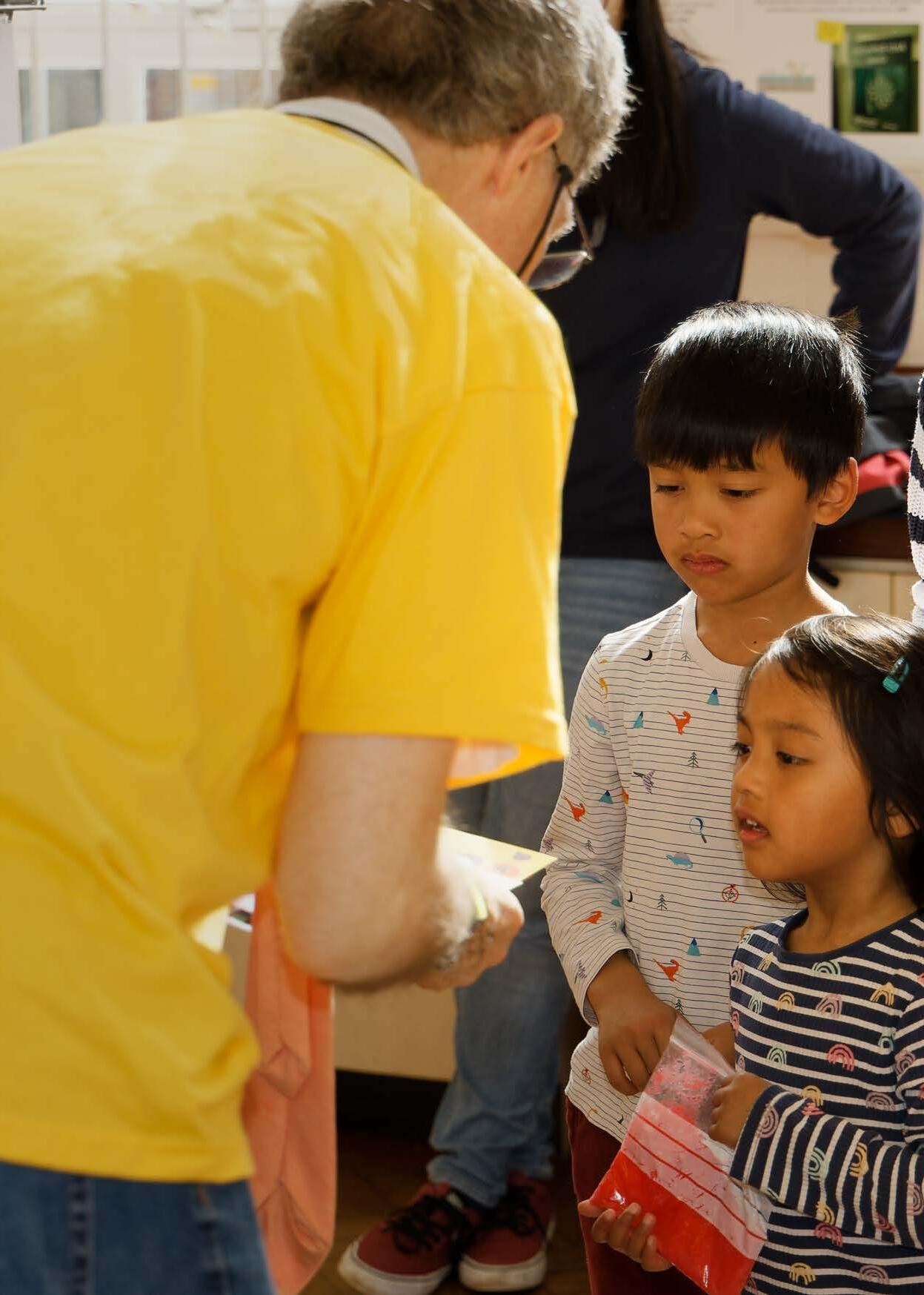

chem@cam www.ch.cam.ac.uk Chemistry at Cambridge Magazine ISSUE 66 SPRING 2023 The next generation of scientists Student scholars 8 Chemistry open day 14 The molecule maker 20
due in July).
entries received by 1st July (the solution will be revealed in our summer e-Chem@Cam, 2 3 Issue 66 Spring 2023
crossword written by postdoc Mary Wood. There will be a prize drawing from all correct
welcome the return of the much-loved puzzle page with a chemistry-themed cryptic
encouraging the next generation of researchers.

to get into the lab and do real research for the rst time. Such experiences are crucial in

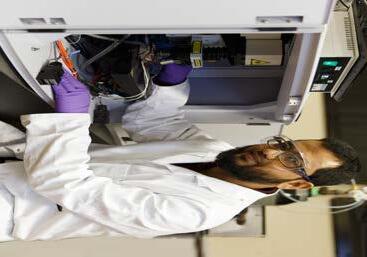
alumni to fund summer projects: four of our undergraduates describe what it was like
In ‘What I did on my summer holiday’ you can read about how we are using gifts from
to overcome his unseen disability.
You can also read about how one early career researcher is using the latest technology
the word “queer” to represent celebration and unity, which has not always been the case.

is with important social issues. This includes the determination and bravery to reclaim
in Chemistry networks –it is so heartening to see how engaged the current generation
We also report on our student-led Gender Equality, Black Women in Science, and Queer

academics to nd out the advice they would have given to their younger selves.
experience as an industry-sponsored PhD. Libby also interviewed two established
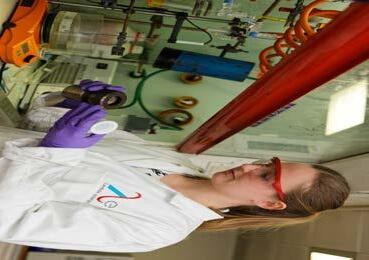
on sulphur dioxide emissions to molecule-maker Rosa Mueller, and Libby Brown’s
We also feature a range of postgrad research and life, from Print Sakulsupich’s research
gatherings and networking events after the enforced solitude of Covid.
explain how they are working to encourage postgrads back to live workshops, social
department. At the core of this support is our newly reconstituted Postgraduate Education Team, who
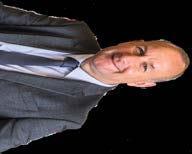
some of their stories, and also about how they are supported by the
we decided to use this issue of Chem@Cam to tell you about
researchers is a continuous source of pride and inspiration, so
The energy and enthusiasm of our students and early career
Contents CHEMISTRY OPEN DAY
THE MOLECULE MAKER UNSEEN DISABILITIES 8 14 A note to my younger self 4 Helping students thrive 6 Our scholars 8 Queer in chemistry 10 Up in the air 12 Chemistry Open Day: Sharing the joy of science 14 As I see it 16 My summer holiday 18 The molecule maker 20 The joy of discovery 22 Noticeboard 23 ________________________________________________________ A representative role 24 Black Women in Science network brunch 25 Solutions for scientists who stammer 26 Past alumni events 27 Turning a molehill into a mountain 28 ________________________________________________________ Combining drugs to combat drug resistance 29 News bites 30 Chemistry cryptic crossword 31 Upcoming events 32 Scientists
Cover photo depicts sharing the joy of science at our Open Day. Chem@Cam Yusuf Hamied Department of Chemistry University of Cambridge Lens eld Road Cambridge CB2 1EW 01223 763079 news@ch.cam.ac.uk www.ch.cam.ac.uk @ChemCambridge Views expressed in this magazine are not necessarily those of the Editor, the Yusuf Hamied Department of Chemistry or the University of Cambridge. Print: Precision Chem@Cam is published twice a year, and is sent free to chemistry alumni, postdoctoral researchers, retired sta and friends of the department. CONTRIBUTORS Editor Diane Harris Contributors Caroline Reid Libby Brown Sally Boss Photography Nathan Pitt Michael Webb Gabriella Bocchetti James Keeler Head of Department 20 26
STUDENT SCHOLARS
of the future
Finally, we have included a roundup of research bites and recent awards, and we
syndrome can help you to develop
con dent, and having imposter
scientist Brave: It is okay to not always be
a more robust and ful lled
Be brave and kind –to be
love doing, and work hard to master it.
superpower Find something (a skill, a topic) you
approaches for energy conversion.
which is investigating biohybrid
Fellow with her own research group,
She is now a David Phillips Research
Curie International Incoming Fellow.
joining the Department as a Marie
University of Sydney in 2012, before
Jenny completed her PhD at the
Dr Jenny Zhang
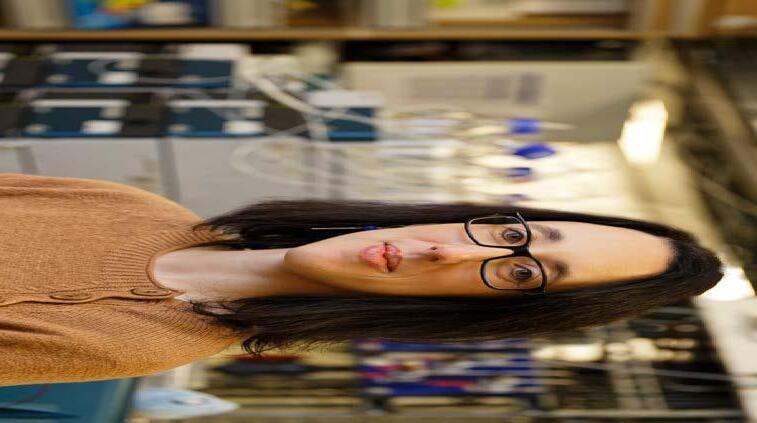
when they started their research careers.
Work hard and develop a
con dence in your decisions.
form your own opinions and develop
Not all advice is useful –trust yourself,
quote from science journalist Ed Yong:
polished form of who you want to be.
expected. It can take years to reach the
privilege. Jenny wanted to leave us with this
will fail, fail and fail again but this is to be
importantly, be kind to yourself. You
Kind: Be kind to others. But more
some combination of luck and
everyone is speaking to you from
you receive... including this, recognising that
opportunities that are presented to you.
Be cautious about all the advice
out of your comfort zone and grasp
you. It is a good idea to put yourself
brave and do something that scares
other projects or paths.
can take it with you to bring value to
competence before con dence. Be
This is something you will own and you
at the beginning of my PhD. I spoke to Dr Chiara Giorio and Dr Jenny Zhang about the advice they wish they had received
years of failure and disappointment. Although am only three years into research life, there are already things I wish I’d known
take on the world of research. You soon learn, however, that science is hard. For every breakthrough, there are months if not
PhD student Libby Brown writes: A PhD is a steep learning curve. You arrive on day one, fresh-faced and bright-eyed, ready to
researchers.
r Chiara Giorio and Dr Jenny Zhang share their top tips for PhD students and early career
A note to my younger self
go wrong.
adapt and explore options when things
organised. But you also must be able to
manoeuvre To succeed as a researcher, you must be
Make a plan but leave room for
may not even know exist.
possibilities, not just academic, that you
to new opportunities and career
than yourself can open your eyes
Talking to people with more experience
PhD/postdoc mentorship programmes.
range of academic, peer-to-peer and
The University of Cambridge has a wide
University Mentoring Scheme
Make use of the Cambridge
past of the Earth’s atmosphere.
is focused on exploring the present and
Lecturer. Research in the Giorio group
in 2020 as an Atmospheric Chemistry
and Italy before joining the Department
conducted research in the UK, France
University of Padua (Italy) in 2012. She
Chiara completed her PhD at the
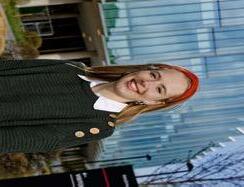
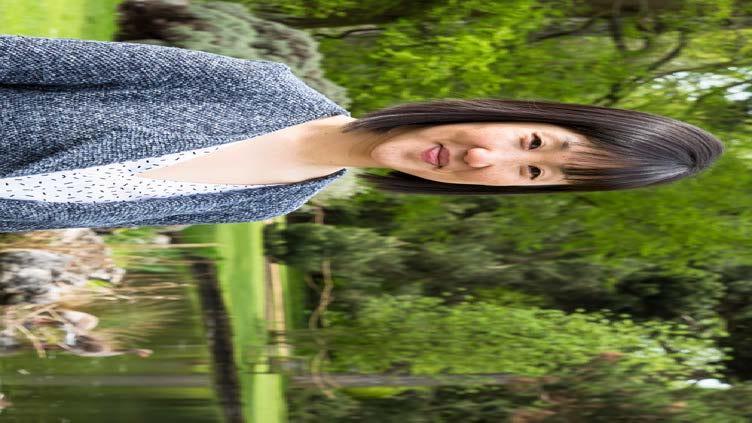
Dr Chiara Giorio
writing too.
experiments. Make time for reading and
Research should not just consist of
This advice is pretty self-explanatory.
writing
mistakes. 1/3 lab work, 1/3 reading, 1/3
yourself up and learn from your
failure. Don’t take it personally, pick
the game Every good researcher has experienced
Failure and rejection are part of
reviews to nd knowledge gaps.
ideas along the way and read literature
Accept that you will have lots of bad
research and throughout your postdoc.
towards the end of your postgraduate
come with time and can develop later
throughout your PhD. However, ideas
academic you must be full of ideas
Many believe that to succeed as an
from the start
You don’t have to be full of ideas
Bernardes group on page 16.
funded PhD with AstraZeneca and the 4 5
experience completing an industry-
D
Nathan Pitt, ©University of
Gabriella Bocchetti, ©University of Cambridge
Cambridge.
Read more about Libby and her
atmosphere.
from the Earth’s surface, which cools the
clouds and re ect more sunlight away
Whilst sulphur dioxide aerosols are
looking for solutions to global warming.
and whiter than naturally-forming
to the aerosol, these clouds are brighter
This tool is especially important when
which modi es cloud properties. Thanks
a nucleus that water vapour clings to,
circulate around the globe.
an environment can have e ects that
to form aerosols. These aerosols act as
with other molecules in the atmosphere
fossil fuels. When sulphur dioxide is airborne it reacts
industry, mostly through the burning of
the majority of emissions are caused by
the atmosphere via volcanic activity but
more acidic. It is released naturally into
is harmful to humans and makes rain
Sulphur dioxide is a corrosive gas that
Sulphate aerosol
predictions,” explains Print.
models to make better climate
“It’s very important to have accurate
understood.
sulphur dioxide gas can be accurately
error bars so that the e ects of releasing
in the Archibald group to reduce these
margin of uncertainty. Print is working
however, the precise amount has a large
are responsible for cooling the planet;
Aerosols formed from sulphur dioxide
and Eastern Asia.
over two highly a ected areas: Europe
e ects of toxic sulphur dioxide emissions
atmospheric sciences studying the
Print is a third-year PhD student in
atmosphere.
uncertainties rst but it’s an exciting idea.”
abroad so there were a lot of new things
“We would want to remove a lot of
currently unknown,” comments Print.
aerosols on ecosystems and oceans are
COVID-19 lockdown.
but the long-term e ects of di erent
atmosphere to cool down areas locally,
is and how even localised changes in
demonstrates how connected the planet
the Earth’s atmospheric chemistry. It
and which Print uses to investigate
ice sheets, oceans and the atmosphere,
the Earth, such as between ecosystems,
between di erent components within
is a model that simulates interactions
The United Kingdom Earth System Model
UKESM
a ected by acid rain.
vegetation is a common sight in areas
if the water is too acidic, and damaged
sh eggs, for example, may not hatch
susceptible to more acidic environments:
of the environment. Some species are
soils, lakes and oceans changing the pH
atmosphere. The sulphur rain is acidic and enters
not have time to mix evenly in the Earth’s
dioxide are local because the gas does
This means that the e ects of sulphur
atmosphere as rain within about a week.
hand, have a short lifetime and leave the
enduring problem. Aerosols, on the other
that global warming is a critical and
atmosphere, which is one of the reasons
dioxide has a long lifetime in the
Most people are now aware that carbon
Sakulsupich investigates aerosols that cool down the
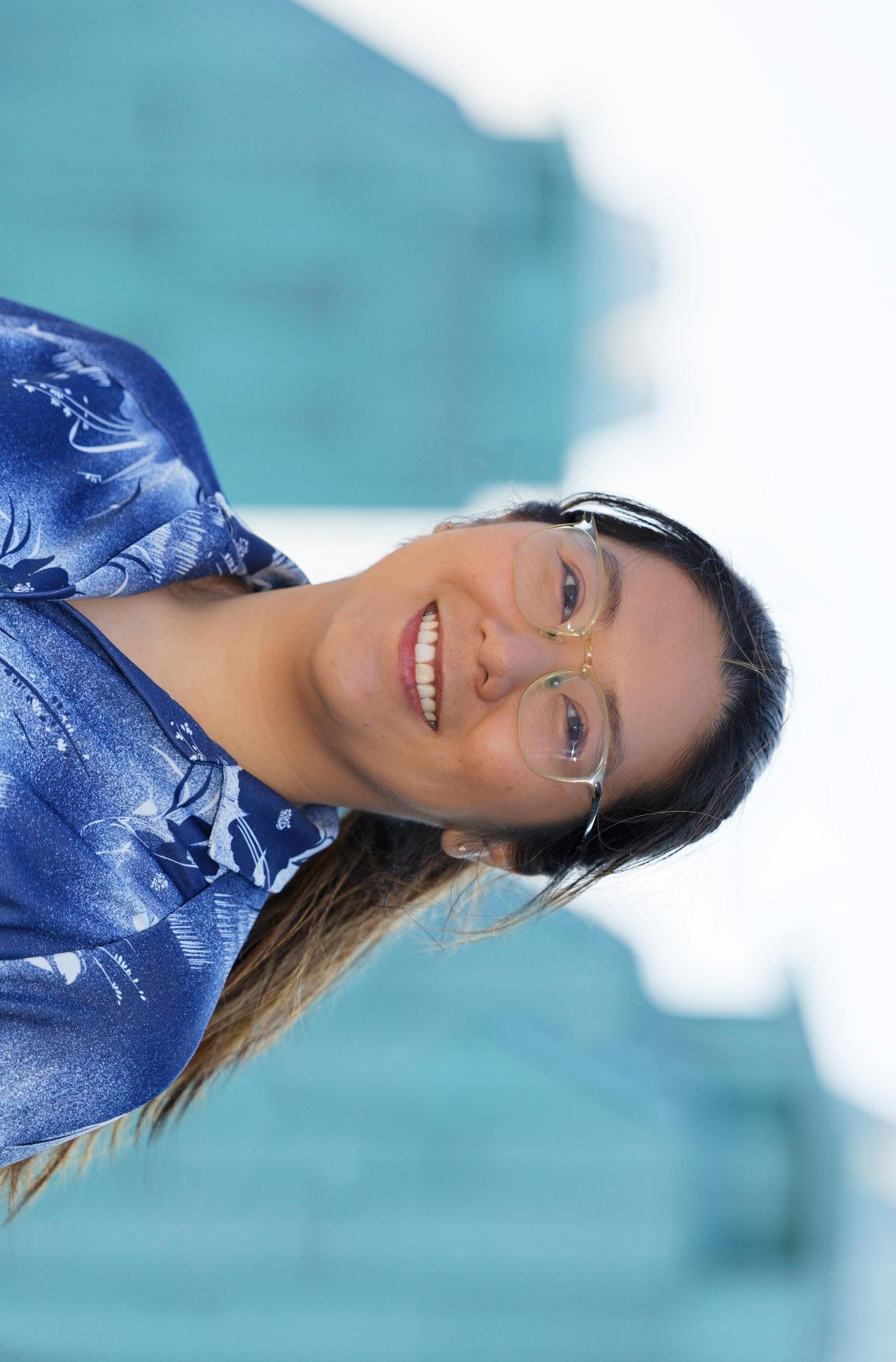
warming the environment, but
Vichawan ‘Print’
tmospheric pollutants are often associated with
AUp in the air
the members are women from di erent 12 13
projects to release aerosols into the upper
“There are ideas about geo-engineering
the atmosphere to cool the planet safely.
aerosol that scientists could release into
hidden in the model in the form of an
Print muses that there may be a solution
aerosols can help cool down the planet.
harmful, they demonstrate that certain
home or nd accommodation during the
her rst job was to help students get
secretary at St Edmund’s College where
activities. She became combination room
part of a group where more than half of
really supportive and I’m grateful to be
her PhD, Print threw herself into college
When she rst moved to Cambridge for
and Dr Paul Gri ths, and my group are
Research Institute of her native Thailand.
“I’ve come this far because my
worked at the National Astronomical
Print moved into meteorology and
Although her background is in physics,
even have a cold winter!”
middle of winter and Thailand doesn’t
Across the skies
countries and backgrounds.” Women in Chemistry
to adjust to. For example, I moved in the
“I’m grateful to be
part of a group
where more than
half of the members
are women from
diferent countries
and backgrounds.
”
Issue 66 Spring 2023
Print Sakulsupich
“It was the rst time I have ever moved ©
supervisors, Professor Alex Archibald
can cause phenomena like re ections
media it is subject to refraction which
di erent speeds through di erent
Explanation: When light travels at
jar of water.
on stress. Toys in water Miniature toys appear suspended in a
which has variable viscosity dependent
example of a non-Newtonian uid,
of very small corn our particles is an
constant viscosity, but this suspension
Explanation: Most uids have a
spot a Jewel beetle.
Use standard cinema 3D spectacles to
Find the shiny beetle
an electric current to power toy cars.
passed through a fuel cell, generating
water electrolysis is captured and
Explanation: The hydrogen fuel from
toy car.
Create enough hydrogen to power a
Hydrogen fuel
stay still and you sink!
Run across it and it holds you up, but
Corn our slime
Learning about non-Newtonian uids the messy way!
fun.
C hemistry
appear to be oating.
water so it is not di racted and the toys
them is travelling at the same speed as
swollen with water, so the light inside
beads (special hydrogels) which are
or distortions. The jar is lled with agar
success!
and volunteers who helped make the day a
like to thank all the students, researchers
that were on o er at Open Day, and we’d
This is just a selection of the many activities
ensures the day runs smoothly.
Coordinator Emma Powney, who always 14 15
on this annual event, and Outreach
support makes it possible for us to put
Walters-Kundert Charitable Trust, whose
the young ones.
nice for us as well –we can learn from
young people. I think it might be very
I am very excited to interact with the
Final year PhD student, Clarke group
Najib Shari (this page, top)
sugar.
instantly freeze a mixture of cream and
colder than ice that it can almost
at very low temperatures. It is so much
them to form oxygen gas.
negative hydroxide ions and oxidises
Explanation: Nitrogen becomes liquid
The positive pencil tip (anode) draws
bubbles to the surface of the water.
Instant ice cream using liquid nitrogen.
Liquid nitrogen ice cream
light, which makes it easy to spot.
that permits left-circulating polarised
beetle is brighter seen through the lens
left-circulating polarised light. The Jewel
structures on their bodies only re ect
metallic appearance because the tiny
Explanation: Jewel beetles have a shiny
reduces them to hydrogen gas, which
positively charged hydrogen ions and
negative pencil tip (cathode) draws
electric current from the battery. The
setup, the pencil electrodes transfer
Explanation: In this simple electrolyser
the researchers who were getting messy, and nd out about some of the science behind the
activities convey real scienti c principles at an understandable level. Meet some of
enthusiasm for chemistry with members of the public. Their engaging, hands-on
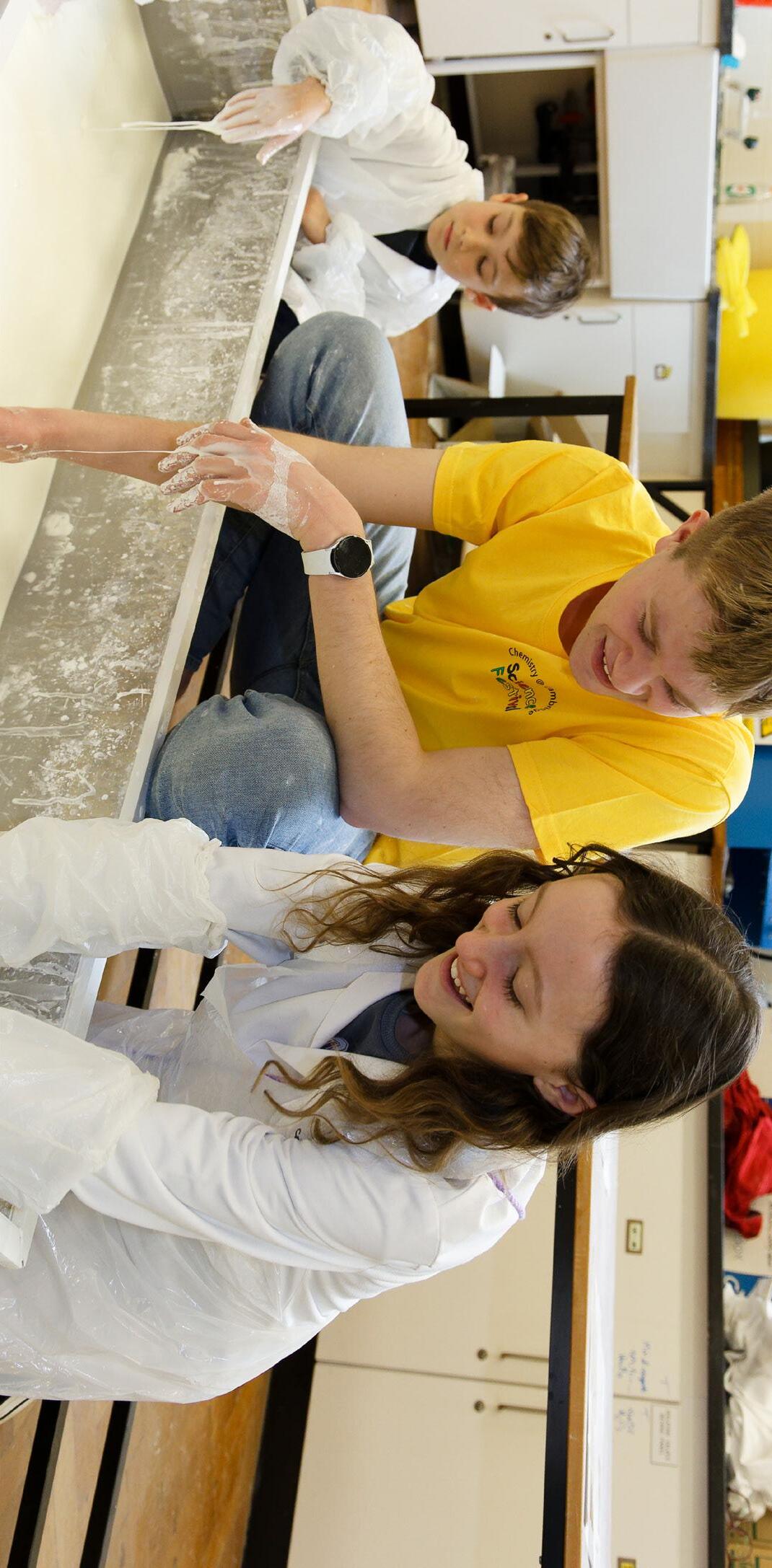
Open Day is a chance for postdocs, postgrads and undergrads to share their

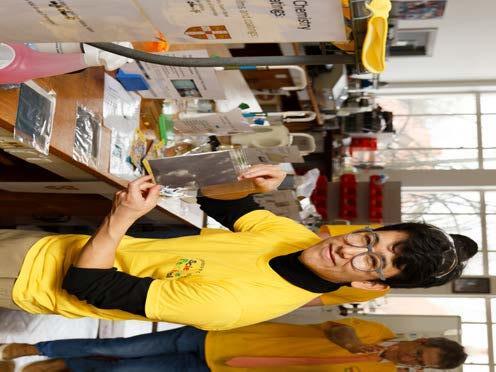
Sharing the joy of science
Chemistry Open Day:
science?
us and continuing the development of
how will people be interested in joining
explain what we actually do in the lab,
If we don’t share our knowledge and
important things we can do in science.
I think that outreach is one of the most
First year PhD student, Vignolini group
Marina Portoghese
water into hydrogen and oxygen.
Pencils connected to a battery split
Pencil
batteries
you couldn’t eat it!
Last year we did pH, which was fun, but
was very happy to be involved this year.
I really enjoyed helping last year so I
Tom Wharton Third year Phd student, Spring group
love interacting with children.
I’m pretty interested in chemistry and I
First year undergrad
in photo)
Linjia Jin (this page, bottom, leftmost
the kids enjoy getting messy!
nice to be on the other end of that. And
to me wanting to do science. It’s sort of
things like this, and it really contributed
When I was their age I came to a lot of
especially with the younger generation.
nice sharing science knowledge,
I volunteered today because it’s really
Third year undergrad
Dylan Cleveland (opposite page)
Michael Webb, ©University of Cambridge
“I think that outreach is one of
the most important
things we can do in
science.
”
Marina Portoghese
We gratefully acknowledge the
PhDs, approval is required to present
as is often the case with industry-linked
ie, research for the sake of learning. And
prefer a more academic style of research,
such as drug discovery, others may
project with clear practical applications
Whilst I have enjoyed working on a
display screening process.
that are compatible with the phage
chemical methods for cyclising peptides
years, I have been developing new
of target binding. Over the past four
cyclised, to reduce the entropic penalty
phage-displayed peptides can be
To further increase binding a nity,
screening technique.
discovered using this high throughput
in ammatory bowel disease have been
arthritis, lung cancer, psoriasis and
interest. Treatments for rheumatoid
high a nity to a therapeutic target of
new proteins or peptides that bind with
of phage display libraries, to help identify
My research focuses on the construction
Life in the lab
completing an industry-linked PhD.
at AstraZeneca. Here, I describe my own experience of
Ravn (followed by Dr Monika Papworth)
Department of Chemistry and Dr Peter
by Professor Gonçalo Bernardes in the
iCASE PhD studentship jointly supervised
AstraZeneca. So in October 2019, I started my BBSRC
Department of Chemistry and
to split my lab work between the
my case, I was given the opportunity
academic and partner organisations. In
in research collaborations between
funds students to undertake research
Science and Technology programme
The Industrial Cooperative Awards in
L
AsI see it
ciently.
my experiments carefully and work
student, so I have had to learn to plan e
in when I work than a standard PhD
Friday. This means I have less exibility
hours tend to be 9 to 5, Monday to
or at the weekend, so my working
Unlike the Department of Chemistry,
Working hours
other collaborators.
supervisor, industrial supervisor and
to bridge the gap between my academic
communication and organisational skills
experience has helped me develop my
di erent time commitments! But this
di erent industries and professions have
arrange meetings when people from
I discovered it can be di cult to
academic and industrial supervisor.
day) and meet regularly with both my
meetings (sometimes on the same
training courses, attend multiple group
to complete university and industry
excellent time management. I have had
A joint university-industry PhD requires
Time management
undergraduate supervisions.
over for interesting talks and to teach
Department of Chemistry, I still pop
time completing lab work in the
Although don’t spend much
phage display experiments.
high-tech equipment needed to perform
are great, and I have access to all the

just south of Cambridge. The facilities
AstraZeneca’s Granta Park labs, located
analysis on the side. I am mainly based at
but also a little bit of computational data
My usual day includes a lot of lab work
ndings, which some may nd restrictive.
at conferences or publish interesting
industry-linked PhD. She describes her experience below.
By interacting with employees across
start to nish.
entire drug development process from
Libby Brown
developed a good understanding of the
that they deem important.
the experimental and transferable skills
to state-of-the-art technology and
clear practical applications, had access
invested time and money in teaching me
industry-based PhD, AstraZeneca has
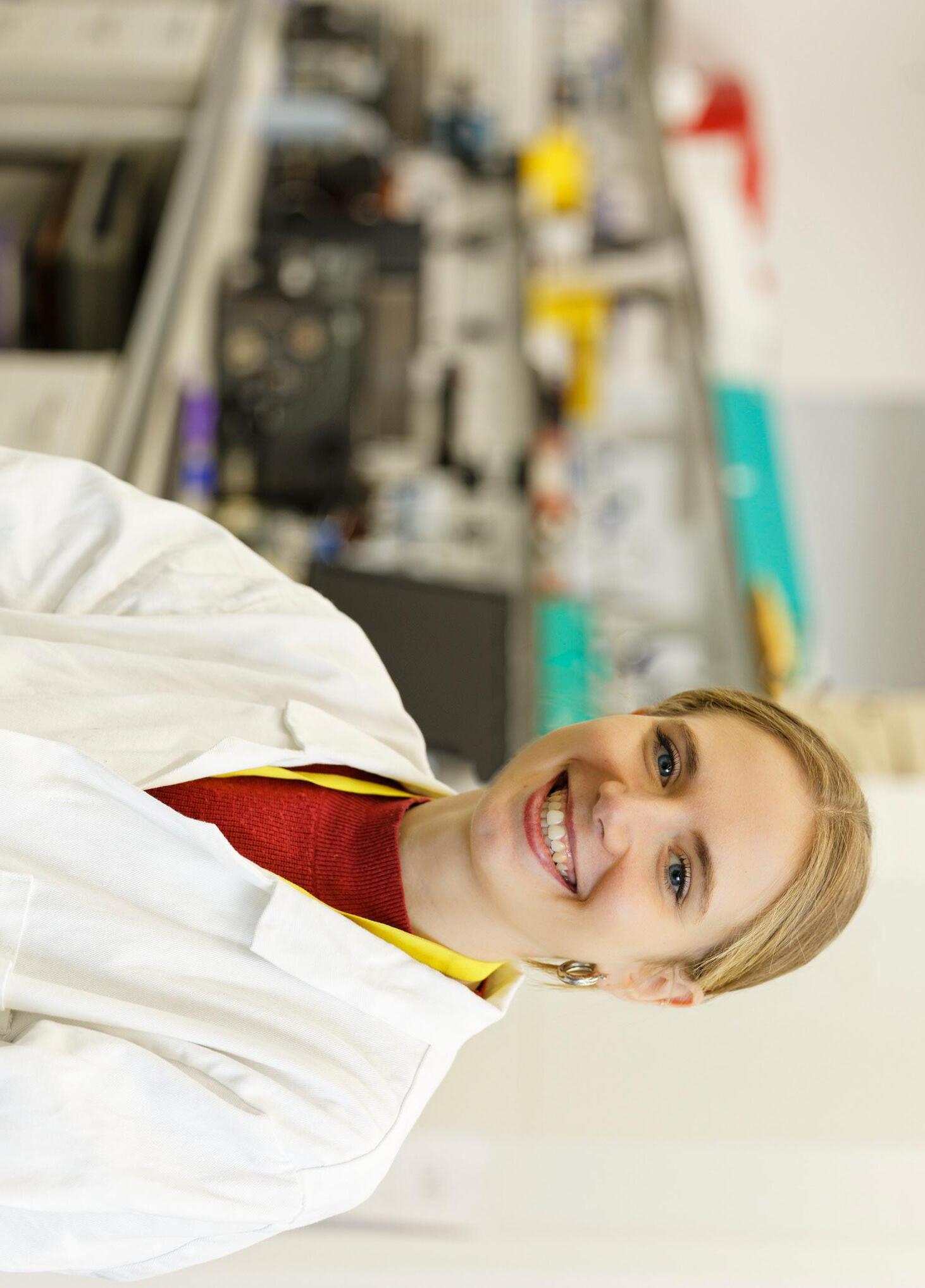
guarantee of a job at the end of an
September this year. While there is no
I will be submitting my PhD in
What’s next?
events at my college (Jesus).
(I run for the university) and attend
to participate in extra-curricular activities
On the plus side, this leaves lots of time
I have worked on a project that has
Cambridge University-AstraZeneca PhD.
display!). To summarise... I have thoroughly enjoyed my joint
the business, I have established a good professional network for career advice
companies (hopefully doing more phage
guidance throughout my PhD.
have provided me with support and
to jobs at biotech and pharmaceutical
some incredible scientists who
factors give me con dence as I apply
and interview practice. Together, these
opportunity to meet and work with
and AstraZeneca, I have had the
Through both the university
Nathan Pitt, ©University of Cambridge 16 17
“I have had the opportunity to meet and work with
some incredible scientists.”
Libby Brown
ibby Brown joined the department in 2019 to complete an Women in Chemistry
AstraZeneca is not open late at night
explains Dr Boris Breiner, Lambda’s Chief Scientist.
“But if
or blue-end light is not used e ciently for plant growth,”
“Too much UV light is damaging for plants, so high-energy
collaboration with an R & D start-up called Lambda Energy.
more plant-friendly wavelengths. The group is working in
‘down convert’ the high-energy photons in sunlight to
The Wright group is creating molecules which are able to
characteristics of the new molecules, which are then tested
The researchers use X-ray crystallography to con rm the
which aspects you can improve.”
form of these compounds, and then you test them and learn
and emit red light. Rosa says: “We started with a very easy
lanthanide Europium, which is known to absorb UV light
They are structured as molecular cages that include the
Rosa describes the molecules she synthesises as ‘chunky’.
energy wavelengths of the solar spectrum, such as red.
productive if exposed to higher amounts of the lower-
The problem Plants grow in sunlight, but crop plants are much more
quantum yield.
wavelengths to the visible spectrum, the greater the
more e ective the molecules are at converting the high
The science Simply put, Rosa’s job is to make new molecules. The
enhance solar absorption in plants and solar cells.
development of new nanomaterials which can be used to
lighting.”
Wright’s research group, Rosa is playing a key role in the
As a student in Professor of Inorganic Chemistry Dominic
increase crop yields without spending more on arti cial
you can down convert the light to the optimum wavelength for plant growth, for example inside a greenhouse, you can
R
which could help improve plant growth and solar panel e ciency.
osa Mueller started her PhD in October 2022 and is already building new molecules
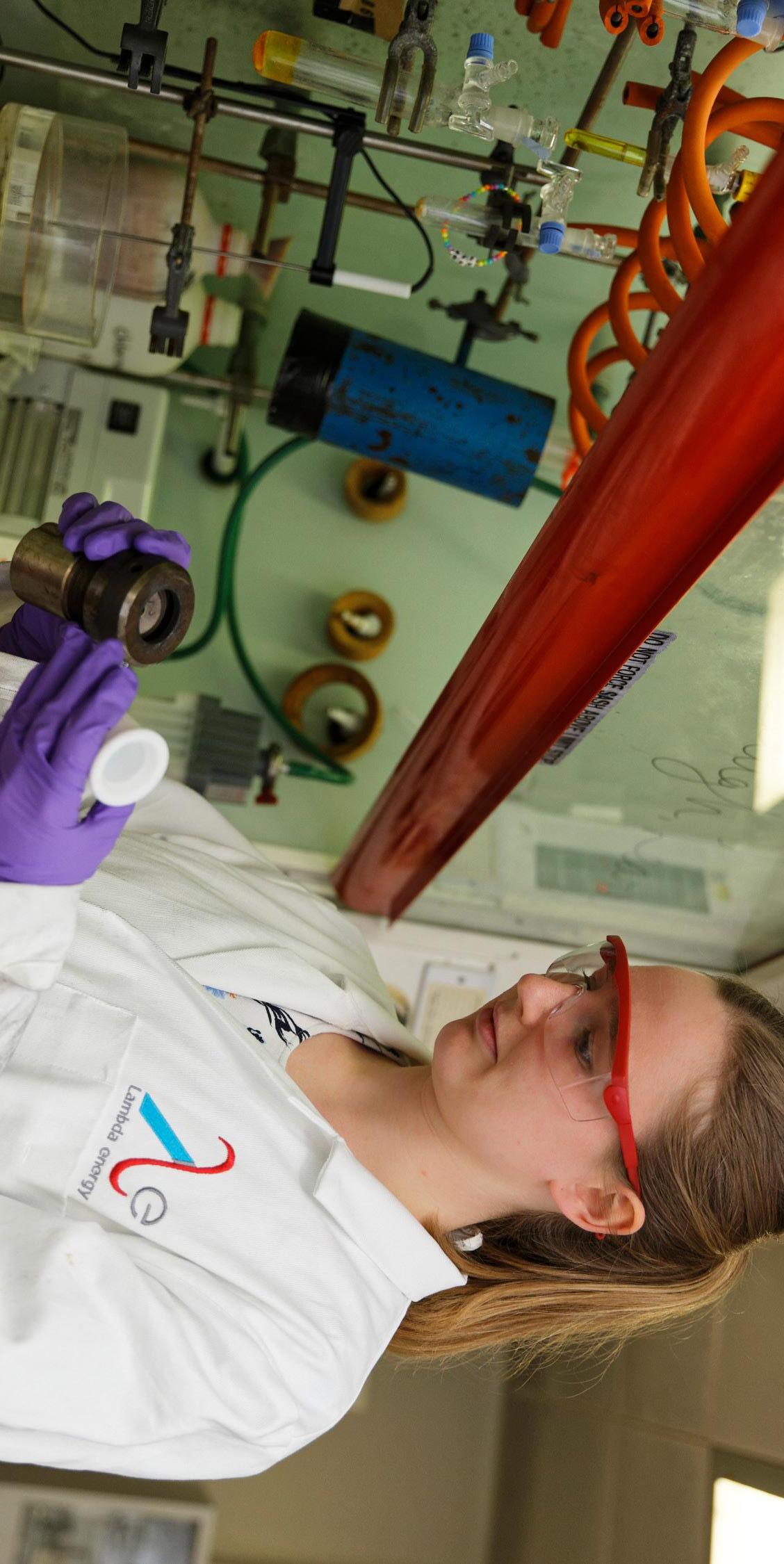

The molecule maker
summer.
series of greenhouse experiments at Cran eld University this
just good,” says Boris. “She’s good good.”
both agree that she is especially skilled in her role.
looking forward to testing their new nanomaterials in a
The team members are upbeat about the future, and are
But Rosa also enjoys making molecules, and Dom and Boris
what we are working on now.”
need to shift absorption into the blue end of light. That is
solar spectrum, but we want to capture 20 percent, so we
Boris agrees: “UV light is only three to ve percent of the
the blue and the green range. It is currently very tricky.”
atmosphere. So we are also trying to capture the photons in
there is not that much UV light, because it’s absorbed by the
converted. Rosa says: “If you look at the solar spectrum,
energy photons that can be absorbed before being down
The next challenge will be to increase the range of high
Next steps
patent to protect this new technology.
increasing electrical output. Lambda has recently led a
these higher-energy wavelengths to red light, thereby
violet light. Lambda’s new coatings could down convert
electricity and are much less e ective at converting UV and
work best at converting red and near infrared light into
of the photovoltaic cells used in solar panels. These cells
Boris. The new materials can also be used to improve the e ciency
material with almost 100 percent quantum yield,” explains
percent, but thanks to Rosa’s molecules, we’ve now got a
reported to have quantum yields varying from 40 to 50
“We based our initial studies on molecules which were
being tested once again.
incorporated into polymer lms by Lambda Energy before
Dr Petra Cameron’s group at the University of Bath and
for quantum yield. The most promising are scaled up by
members of our group are really great.”
really easy to nd a social environment that I like. And all the
“Partially because I do so much rowing, but also it’s been
St John’s College, loves to row.
“I love Cambridge,” she says.
In the little free time that she has, Rosa, who is a member of
already thought of that!”
come to her and say ‘can you try this?’ and it turns out she’s
Boris agrees. “We give her minimal input. For example we
molecular chemistry actually work.”
primary one delivering on the new materials and making the
built the molecular side of the project. Rosa’s been the
The scientist Dom says: “This is a story of how a PhD student has basically
anti-counterfeiting technology in money.”
have other uses in medical sensors, display technology, and
great potential for improving solar cell e ciency. They also
only improve crop yields in greenhouses, but they also have
with a very high quantum yield,” says Boris. “They will not
“We are developing new materials that are cheap, robust and
“She’s not just
“She’s not Nathan Pitt, ©University of Cambridge
good. She’s good good.”
20 21 Issue 66 Spring 2023
Boris Breiner
who stammer, Nature (2022) 607 197-199.
working with supportive colleagues.” 26
this would a ect his career, especially
institutions have inclusive practices in
Mobbassar, and he is passionate that
he says.
Mobbassar was worried how
daunting, even exclusionary, for 1 Hassan SK, Communication tools for scientists
like a pressure building inside me,”
his voice.
“When I raise my voice it’s
In the past, job interviews have been
Mobbassar concludes: “There are fewer
environment for people who stammer.
stammer and struggles to project
as an unseen disability –he has a
Mobbassar has what could be de ned
Text to voice technology
audience can see.
on a blank PowerPoint slide that the
phrases whilst simultaneously typing
Mobbassar speaks in keywords and
time limit! When answering questions,
electricity sustainably.
essential for advances in storing
supercapacitor materials, which are
and understand surfaces in di erent
could also be employed to characterise
enjoyed,” he says. These techniques
challenging work that have really
phenomena.
“This is exciting and
leads to better understanding of many
real time is inherently powerful and
Observing reactions happening in
it makes sure he sticks to a conference
Another advantage he points out is that
saying — not how they are saying it.
to con dently focus on what they are
way to help scientists who stammer

Mobbassar says the software is a simple
and when he is giving presentations.
synthesiser programme for teaching
enlist technology. He uses a speech
Mobbassar’s solution has been to
world are a ected by stammering.
intense heat or pressure.
extreme environments, such as under
stammer.” Over 70 million people around the
processes happening on surfaces in
techniques, he can observe chemical
visible until I speak — you can’t see my
presentations. “My impediment isn’t
this and a suite of state-of-the-art
real time at the molecular level. Using
when lecturing students and giving
watch chemical reactions happening in
spectroscopic instrument systems to
used in various microscopic and
cells and in-situ setups that can be
designs and develops custom sample-
investigate corrosion, Mobbassar
in response to its surroundings. To
corrosion, where a material deteriorates
sciences group. His research focuses on
in Professor Stuart Clarke’s surface

Mobbassar is a postdoctoral researcher
lecturer.
success as a researcher and
stopped him from achieving
entire life. But this hasn’t
has had a stammer his
r
Mobbassar Hassan Sk
who stammer
of how to create a more welcoming
wants to increase their awareness
and it is a useful read for anyone who
enhance his science communication
covers some of the tools he uses to
tools for scientists who stammer 1 . It
correspondence called Communication
has published in the journal Nature a
In addition to his research, Mobbassar
Scientists who stammer
collaborate in team meetings.
this technique for lectures and to
greatly encouraged, and he still uses
to deliver talks. He says this has been
rst started using a speech synthesiser
time, and it is in Cambridge where he
current role, he was provided with more
example, when interviewed for his
fairly here in the department. For
Mobbassar feels he has been treated
Wothers
presentation 11 Feb 2023 taken by Michael Webb ©University of Cambridge
thesis, a rare letter written by Humphry Davy, alchemical
collection, which included a copy of Marie Curie’s signed
was held. After the lecture, guests were able to view the
McGrath Centre at St Catherine’s College, where the lecture
historic science texts, many of which were on display in the
Peter also referred to his interest in collecting rare and
YouTube channel.
videos, on the Yusuf Hamied Department of Chemistry
You can watch the lecture, along with many other great
early women scientists who helped make this possible.
in science for women and girls. Jane Marcet was one of the
in Science, which promotes equal access and participation
more elements were discovered or renamed.
book needed to be updated in a series of later editions, as
celebrated the UN International Day for Women and Girls
completed both his degrees at St Catharine’s. The event also
very highly of her scienti c abilities. Peter showed how the
Marcet’s correspondence with Michael Faraday, who thought
College, Professor John Pyle, introduced Peter, who
some highlights of this early science textbook, including
published anonymously in 1805. Peter led viewers through
St Catharine’s. Former Head of Department and Fellow of St Catharine’s
Intended More Especially for the Female Sex which was rst
Marcet’s most well-known work is Conversations on Chemistry
books, and an artwork representing the periodic table of electron orbitals which Peter designed with colleague
George Trenins, a former student in theoretical chemistry at
D
annual alumni lecture on 11 February.
rPeter Wothers gave a fascinating talk on pioneering science writer Jane Marcet at our
Chemistry
Conversations on
D
Solutions for scientists
Dr Peter
place for people who stammer.
obstacles to doing great science when 27 Issue 66 Spring 2023
Alumni festival
Save the date: Friday 22 September at 6pm
The University of Cambridge alumni festival is a weekend of discovery, intellectual adventure and reconnection which takes place every year in September. As part of the event, we will be hosting an educational and fun presentation about some of our latest research, suitable for ages 12 and above.
You will be able to enjoy a glass of something sparkling and some nibbles in our Cybercafé while learning about the exciting research going on here in the department. Watch for more details in the July e-Chem@Cam.
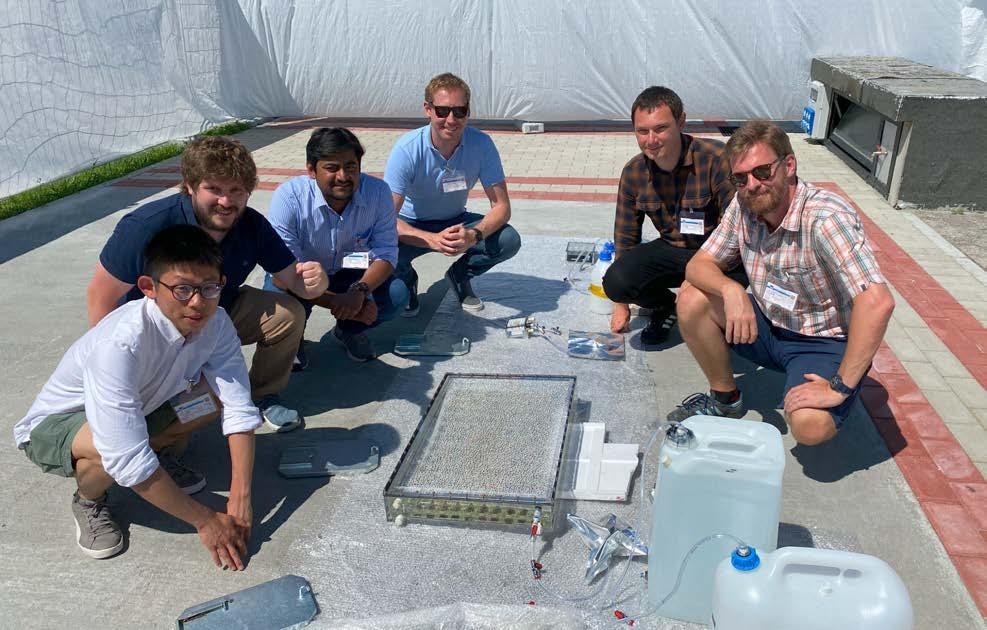
32
Last year researchers spoke about their summer project using arti cial leaves to convert sunlight into solar fuel.























